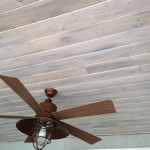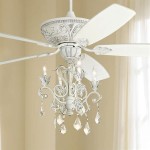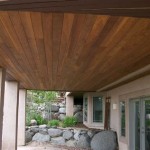What Are Drop Ceiling Tiles Made Of?
Drop ceiling tiles, also known as suspended ceiling tiles, are a common feature in both commercial and residential buildings. Their popularity stems from their ease of installation, accessibility to above-ceiling utilities, and aesthetic flexibility. Understanding the materials that comprise these tiles is crucial for making informed decisions regarding installation, maintenance, and replacement. The composition of drop ceiling tiles greatly influences their performance characteristics, including fire resistance, sound absorption, moisture resistance, and overall durability.
The materials used to manufacture drop ceiling tiles have evolved significantly over time, reflecting advancements in material science and a growing emphasis on sustainability. Early drop ceiling tiles were primarily made from mineral fibers. However, contemporary manufacturing incorporates a wider range of materials, including fiberglass, recycled content, and specialized coatings designed to enhance specific properties. The specific composition of a drop ceiling tile will typically be dictated by its intended application and the desired performance characteristics.
Mineral Fiber Ceiling Tiles
Mineral fiber ceiling tiles represent a significant portion of the drop ceiling tile market. These tiles are composed primarily of mineral wool or rock wool, blended with binders and other additives to create a cohesive and durable product. The mineral wool itself is typically derived from molten rock, slag, or recycled glass, which is spun or drawn into fine fibers. The manufacturing process involves mixing the mineral fibers with starch, cellulose, and other binders to create a slurry.
This slurry is then formed into sheets of desired thickness and density. The sheets are dried and often treated with various coatings to improve their surface appearance, fire resistance, and cleanability. Some mineral fiber tiles are textured or embossed to provide a more visually appealing surface. The density and composition of the mineral fiber matrix directly impact the tile's sound absorption properties. Higher density tiles generally offer better sound attenuation, making them suitable for environments where noise reduction is a priority.
A significant advantage of mineral fiber ceiling tiles is their inherent fire resistance. Mineral wool is non-combustible, and the tiles can achieve high fire-resistance ratings, contributing to overall building safety. Furthermore, mineral fiber tiles offer good thermal insulation, which can help to reduce energy consumption by minimizing heat transfer through the ceiling. However, mineral fiber tiles can be susceptible to moisture damage, particularly in high-humidity environments. Exposure to excessive moisture can cause the tiles to sag, warp, or lose their structural integrity.
To mitigate moisture-related issues, some mineral fiber tiles are treated with water-repellent coatings. The effectiveness of these coatings can vary depending on the quality and application process. Regular inspection and maintenance are crucial to identify and address any signs of water damage before they escalate. Furthermore, some specialized mineral fiber tiles incorporate antimicrobial additives to inhibit the growth of mold and mildew, making them suitable for environments where hygiene is paramount.
Fiberglass Ceiling Tiles
Fiberglass ceiling tiles offer an alternative to mineral fiber tiles, providing a different set of performance characteristics. These tiles are made from glass fibers bonded together with a resin binder. The glass fibers are typically produced by melting sand and other raw materials and then drawing the molten glass into fine strands. The resulting fibers are then formed into mats, which are subsequently compressed and bonded together with the resin.
Fiberglass ceiling tiles are known for their excellent sound absorption properties. The open-cell structure of the fiberglass matrix allows sound waves to penetrate the tile and be absorbed, reducing reverberation and echo. This makes fiberglass tiles particularly well-suited for applications such as offices, classrooms, and auditoriums, where acoustic comfort is important. The sound absorption performance of fiberglass tiles can be further enhanced by applying specialized facings or coatings.
In addition to their acoustic benefits, fiberglass ceiling tiles are also highly resistant to moisture and humidity. Unlike mineral fiber tiles, fiberglass tiles do not absorb moisture, preventing sagging, warping, and the growth of mold and mildew. This makes them suitable for use in environments with high humidity levels, such as bathrooms, kitchens, and swimming pools. The dimensional stability of fiberglass tiles ensures that they maintain their shape and integrity even under fluctuating humidity conditions.
While fiberglass itself is non-combustible, the resin binder used in fiberglass ceiling tiles can be flammable. Therefore, it is crucial to select fiberglass tiles that meet the required fire safety standards for the intended application. Fire-rated fiberglass tiles are typically treated with flame-retardant additives to improve their fire resistance. These tiles may also be encapsulated in a fire-resistant facing to provide an additional layer of protection.
Fiberglass ceiling tiles are generally lightweight, which makes them easy to handle and install. However, the loose fibers can be irritating to the skin and respiratory system during installation. It is recommended to wear appropriate personal protective equipment, such as gloves, goggles, and a dust mask, when working with fiberglass tiles. Proper ventilation is also important to minimize exposure to airborne fibers.
Specialized Composite and Recycled Ceiling Tiles
Beyond mineral fiber and fiberglass, a range of other materials are used to manufacture drop ceiling tiles, often incorporating recycled content and addressing specific performance requirements. Composite ceiling tiles may combine various materials, such as mineral fiber, fiberglass, and gypsum, to achieve a specific balance of properties. For example, a composite tile might incorporate a gypsum core for enhanced fire resistance and a fiberglass facing for improved sound absorption.
The growing emphasis on sustainability has led to an increased demand for ceiling tiles made from recycled materials. Recycled content can include recycled paper, cardboard, plastic bottles, and other waste materials. These materials are processed and reformed into ceiling tiles that offer similar performance characteristics to traditional tiles while reducing the environmental impact. The percentage of recycled content can vary depending on the manufacturer and the specific tile design.
Some ceiling tiles are made from completely unique materials designed for specific applications. Metal ceiling tiles, for instance, are often used in commercial kitchens or clean rooms due to their durability and ease of cleaning. These tiles are typically made from aluminum or steel and may be coated with a protective finish to prevent corrosion.
Another specialized type of ceiling tile is the stretch ceiling system. Stretch ceilings consist of a lightweight membrane stretched across a frame, creating a smooth and seamless surface. These membranes are typically made from PVC or other polymers and can be printed with custom designs or images. Stretch ceilings offer a high degree of design flexibility and can be used to create unique and visually striking architectural features. They also offer good acoustic performance and can be easily cleaned and maintained.
The selection of the appropriate ceiling tile material depends on a variety of factors, including the intended application, the desired performance characteristics, the budget, and the aesthetic preferences. Understanding the properties of different materials is essential for making informed decisions and ensuring that the chosen tiles meet the specific needs of the project. Careful consideration should be given to factors such as fire resistance, sound absorption, moisture resistance, durability, and environmental impact.
Regular inspection and maintenance are crucial for extending the lifespan of drop ceiling tiles and ensuring their continued performance. Damaged or deteriorated tiles should be replaced promptly to prevent further damage and maintain the integrity of the ceiling system. Proper cleaning and maintenance practices can also help to prevent the growth of mold and mildew and extend the life of the tiles.
The evolution of drop ceiling tile materials continues, with ongoing research and development focused on improving performance, sustainability, and design flexibility. New materials and manufacturing processes are constantly being explored, driven by the demand for more innovative and environmentally friendly ceiling solutions. As technology advances, the options for drop ceiling tiles will likely expand even further, offering architects, designers, and building owners a wider range of choices to meet their specific needs and preferences.

What Are Ceiling Tiles Materials Granmore Ceilings

What Are Suspended Ceiling Tiles Made From

What Do Asbestos Ceiling Tiles Look Like Removal Pro

What Do Asbestos Ceiling Tiles Look Like Removal Pro

What Are Ceiling Tiles Made Of Suspended Materials

5 Alternatives To Drop Ceilings Brighten Your Space Trusscore

Wood Cellulose Ceiling Tiles Asbestos Home Improvement Stack Exchange
How To Soundproof A Drop Ceiling Second Skin Audio

What Are Suspended Ceiling Tiles Made From
Ceilings Kanopi By Armstrong
Related Posts








